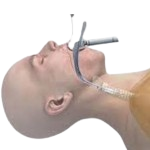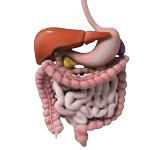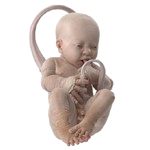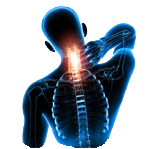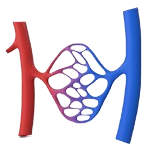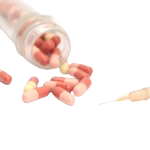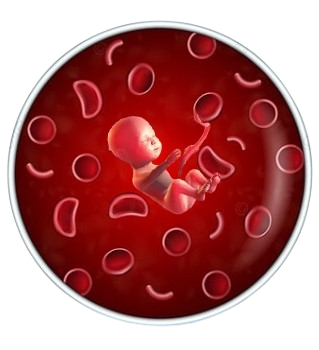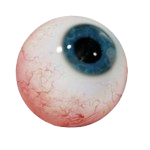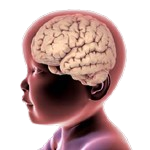
Our Departments
Simplifying healthcare for you and your family
Finding the right doctor and the right treatment options can be a daunting task, especially in a vast region like Asia. Find your preferred doctor and treatment options from top healthcare providers. Doctorspedia has created a comprehensive database of medical professionals, clinics, and hospitals throughout the region. Doctorspedia.co allows you to find and compare information about doctors, including their qualifications, specialities, and services they offer.




Corporate Clients










29769
2984
1235
4898
Blog
To preserve excellent health and stave off ailments, it's essential to keep up with the most recent medical advancements and health advice. Maintaining up-to-date knowledge of the most recent developments, fashions, and advice is crucial in the ever-changing world of medicine. So Keep yourself updated with our medical & health tips.
07 Jan, 2023
Things to know regarding men's health.
Nowadays, everyone leads a very busy life, and there is no time to think about the body. However, the importance of physical fitness cannot be denied when it comes to achieving certain goals. Therefore, let us know about the following steps.
- Regular Doctor Visits
Men tend to be quite indifferent about seeing a doctor. One of the reasons why women live an average of five years longer than men is that they are more aware than men about the importance of seeing a doctor. You should schedule check-ups early in your senior year so that your doctor can check your blood pressure and cholesterol levels regularly.
- Eat Natural Food Regularly
Eating regular vegetables, fruits, fish, beans, etc., while excluding processed foods, will keep you active for a longer period of time.
- Take Regular Walks
To avoid heart disease, do regular 30 minutes light exercises like walking, jogging, playing tennis, etc.
- Keep Your Waist Straight
Men with a fat waist are more at risk of developing diabetes, blood pressure, stroke, etc. To avoid these risks, keep your waist size below 40 inches.
- Avoid Unhealthy Habits
Quit smoking completely, avoid even second-hand smoke, and stay away from alcohol as much as possible.
- Check the Prostate
Talk to your doctor about getting a prostate exam. To be free from risk, you can undergo prostate-specific antigen (PSA), blood tests for prostate cancer, and digital rectal exams (DRE) by consulting your doctor.
07 Jan, 2023
Vitamin D Is Essential For The Health Of Both Children And Adults.
In recent times, various studies have shown that most of the diseases of the human body worldwide, usually diabetes and thyroid disease, are the main causes of vitamin-D deficiency. The role of Vitamin-D in everything in our body is immense. Vitamin-D helps in the formation of every organ in our body. Vitamin-D increases the amount of calcium and phosphorus in the body, while playing an important role in the formation of teeth and bones.
Requirement of Vitamin-D:
Vitamin-D is actually a steroid hormone. Vitamin-D plays an important role in increasing the body's calcium, phosphate levels and bone structure and density in particular. While various vitamins act as anti-oxygen or co-enzymes, Vitamin-D (steroid hormone) plays a special role in the body's protein production.
Symptoms that can occur due to lack of Vitamin-D…
Vitamin-D deficiency is usually the main cause of rickets disease or crooked bones, muscle spasms, breathing problems, asthma, skin diseases, even calcium deficiency in children. With severe deficiency of Vitamin-D, the baby's skull and leg bones can become soft or curved. Children curl up with pain in the leg bones at the slightest pressure - which causes muscle pain or muscle weakness.
Rickets Disease: (Rickets Disease)
If calcium cannot be absorbed by the body, children develop Rickets Disease. The main reason is usually lack of Vitamin-D. Because calcium and phosphate are usually available through Vitamin-D for bone formation in the body. In children, the body needs sufficient Vitamin-D from 3 months to 18 months of birth, otherwise the child's hands, feet may appear crooked or fragile. Again, lack of calcium can lead to seizures or delay in walking and teething.
Effects of Vitamin-D in Adults:
Vitamin-D deficiency is the main cause of various problems such as osteomalacia, fatigue or dull pain. According to current research, vitamin-D deficiency is linked to many other diseases such as heart disease, diabetes and stroke.
Source of Vitamin-D
The main source of Vitamin-D is sun-rays. 90% deficiency of Vitamin-D in the human body is met from the sun rays. In addition, sea fish, fish oil, egg-milk, meat bones and fish cuts fill the deficiency of Vitamin-D through many essential foods.
Some special symptoms of Vitamin-D deficiency:
Some symptoms are often seen due to lack of Vitamin-D in the body of people of different ages -
- Becoming almost physically ill
- Sudden loss of consciousness,
- Seizures
- Fatigue or lethargy
- Blurred vision
- Feeling depressed
- Delayed resolution of sores or pain from any injury
- Almost back and waist pain
- Feeling sore or weak around the muscles
- Muscle tension
- Feeling a kind of weakness in the bones
- Premature bone loss (osteoporosis)
- Decay of teeth and gums
31 Jan, 2023
The Ambulance Service's Past
Ambulances are now a normal phenomenon in our daily lives, we call them whenever there is an emergency, but was it always so? Was the ambulance always there to save lives? Number emergency services, like everything else, have boom days.
Ambulances have been around for a long time and their history begins in ancient times. In 1487, Spanish troops used ambulances as emergency transport during the Siege of Malanga. This was the first recorded ambulance being used as an emergency transport service. At the time, the Spanish army was treated very well, but many soldiers died on the battlefield because they were taken to hospitals only after the battle had ended. Such scenarios tormented a man named Dominique Jean Lary.
Dominique Jean Lary took part in the fighting between the French and Prussian armies. His concern was that wounded soldiers would not be carried by numerous ambulances, as ambulances are not four-wheeled to begin with. Before 1766, ambulances were littered with more horses than they could hold wounded soldiers, and many died from lack of electricity.
So between 1766 and his 1842 there was a great change in the use of ambulances in combat, and this change was made by this man, Dominique his Jean Larry. He decided to build a new kind of ambulance system that doesn't ride on horse toilets.
He created an ambulance, a chariot on two or four wheels. These ambulances can now rescue wounded and fallen soldiers from active battlefields. Dominique Jean Larry later became Napoleon Bonaparte's personal physician.
During the American Civil War, Larry's work developed. Joseph Burns and Jonathan Letterman, his two Union Surgeons, created a pre-hospital care system for soldiers that ensured new transportation methods and technology. However, these ambulances had two wheels and were not very effective at carrying two or three wounded soldiers, so they were replaced by another type of ambulance with four wheels, called the "lacquer" ambulance. I was. At the time, lacquer ambulances were very common on the battlefield, taking wounded soldiers to proper treatment and care.
Auto ambulances were introduced in the 19th century, but before that all ambulances were horse-drawn carriages, large and small, but all these ambulances were always ready to save lives. The first hospital-based emergency medical service was based in a commercial hospital in Cincinnati, Ohio.
These ambulance services were created to get patients to the hospital faster and more conveniently. The service was started in his 1869 by Edward Dalton, a former Union Army surgeon. These ambulances were equipped with splints, stomach pumps, plasters and morphine, reflecting modern medicine.
In later years these ambulances also had hospital staff or crew on board, so the hospital hired two full-time emergency surgeons to devote themselves to these patients, and by 1869 there were ambulances with residency training. staffing has been fully established. These ambulances were slightly modified until the early 20th century. Then, in the early 20th century, automobile ambulances were introduced and used in conjunction with horse-drawn ambulances. Early automobile ambulances were used to run on steam, gasoline and electricity. The first mass-produced automobile ambulance was built in 1909 by James Cunningham in the United States.
During World War I, horse-drawn ambulances were phased out due to the success of automobile ambulances on the battlefield. The idea of an ambulance was also born during World War I, and the first custom-built ambulances were built in the late 1920s. But at that time, unlike modern times, they were intended only for fast transportation.
Modern emergency services are well developed and far more equipped than in the past. Now, ambulances are not only used for transportation, but also for getting patients to medical attention quickly so that they can get the appropriate treatment they need before they reach the specialists. increase.
There are now far more diverse ambulance services than there used to be, such as: B. ICU ambulances, ICU ambulances, non-AC or non-AC ambulances, refrigerated ambulances, ALS (Advanced Life Support) ambulances, and air ambulances. There are many variations of these air ambulances, currently one is a turboprop ambulance and the other is a jet. Helicopters are classified as turboprop rescue aircraft and are intended to travel short distances, while jet aircraft are intended to travel longer distances. Emergency services are now like pre-hospital care.
The EMS company's service is to provide an ambulance.
An ICU ambulance is needed when a patient is suffering from a life-threatening condition and needs urgent medical care. This is because normal ambulances are only used for transportation and cannot provide this kind of intensive care.
It should be ensured that the crew on board or medical technicians on board are adequately trained and experienced in such medical crises. They must ensure that the ambulances they provide and their medical staff treat patients with reasonable care and responsibility.
These companies also need to do their jobs very efficiently and provide their customers with the right information about everything in a limited amount of time. B. Information about the types of ambulances we offer and the prices for each.
From the outside, the ambulance looks like an ordinary minibus, but inside the ambulance the picture is very different. In an ambulance he has two compartments, one in the rear for the patient and caregiver and the other in the front for the ambulance driver. Ambulances have windows, but most of them are dirty for patient privacy.
In ambulances, depending on the patient's condition and the emergency medical services required, there are other large or small pieces of equipment that are required to be carried in the ambulance. B. The intensive care ambulance service has different equipment than the intensive care ambulance service.
These devices are there to make sure the patient is stable until they reach the hospital. Ambulances also have beds or stretchers for patients. These beds have wheels so the patient does not experience any inconvenience when moving from the ambulance to the hospital. Ambulances are also staffed by medical staff who are well-trained in handling critical to normal patients.
A common mistake in emergencies.
It's very easy to panic in an emergency and it's the first mistake we make.
Often times, a loved one is going through a crisis and we panic and wonder what to do, how to face the situation, or what to actually do in that moment of emergency. I can't fully comprehend what happened and I'm completely empty.
It does not analyze the situation to understand the next step to take. And make the following mistakes, failing to provide correct information, overlooking important details, and looking for the best hospitals even miles away. The key here is to stay calm during times like this so that we can make better decisions for our patients, but what is happening to emergency services, what is the patient's condition and symptoms? , or should tell you exactly how serious they are. so rescue companies can suggest or reference exactly what to do.
In addition, every minute is precious for patients, and the most important thing is to choose a hospital that is very close to them. Once the patient's condition is stabilized, you can switch to the hospital of your choice at any time.
We often lose people due to indecision because it takes too long to decide what to do. We need to be very calm in emergencies like this so that we can make quick and accurate decisions to save lives.
Information you need to provide to receive faster and more efficient rescue services.
When calling an ambulance, you must provide the ambulance with information. First, we need to inform you about the patient's condition. B. You should at least tell them how serious they are, what they're suffering from, and if you can't, at least tell them the symptoms so they can send you appropriate help.
Second, you should communicate your budget and affordability. Third, correct details or information must be provided to reduce inconvenience for both parties. Finally, the patient's exact whereabouts or address must be communicated so that the patient can be taken to the hospital as soon as possible.
All this information helps rescue companies understand the situation and send rescues faster and more efficiently.
24 Mar, 2023
Strawberries and Cream Oatmeal: A Delicious and Nutritious Breakfast Option
Strawberries and Cream Oatmeal: A Delicious and Nutritious Breakfast Option
If you're looking for a tasty and healthy breakfast idea, then strawberries and cream oatmeal might be just what you need. Oatmeal is a great way to start your day as it is packed with fiber, protein, and essential vitamins and minerals. Adding fresh strawberries and a dollop of cream makes this dish even more delicious and nutritious.
Here are some reasons why strawberries and cream oatmeal should be your new go-to breakfast:
1. Nutritious and Filling: Oatmeal is an excellent source of complex carbohydrates, which means that it will keep you full for longer. It is also rich in fiber, which helps to regulate your digestive system and keep you feeling satisfied. Strawberries are an excellent source of vitamin C, which supports a healthy immune system. They also contain antioxidants that help to protect against cellular damage.
2. Quick and Easy: Strawberries and cream oatmeal are a quick and easy breakfast option that can be prepared in just a few minutes. Simply cook your oatmeal according to the package instructions and top it with fresh sliced strawberries and a drizzle of cream.
3. Versatile: One of the best things about oatmeal is that it is incredibly versatile. You can add a wide variety of toppings to suit your taste preferences. In addition to strawberries and cream, you can also try adding other fruits like blueberries or bananas, nuts like almonds or walnuts, or a drizzle of honey for sweetness.
4. Kid-Friendly: Oatmeal is an excellent breakfast option for kids as it is easy to prepare and customize to their liking. Adding strawberries and cream to their oatmeal is a great way to get them excited about eating a healthy breakfast.
In conclusion, strawberries and cream oatmeal is a delicious and nutritious breakfast option that is quick, easy, and versatile. It is packed with essential vitamins and minerals, filling fiber, and complex carbohydrates that will keep you feeling satisfied throughout the morning. Give it a try and start your day off right!
25 Mar, 2023
The top 08 Most Dangerous and Deadliest Diseases in Bangladesh
The top 08 Most Dangerous and Deadliest Diseases in Bangladesh. Bangladesh is a small country in the world with abundant natural resources and a population of over 170 million. Due to the large number of people living in a small area, various types of diseases are prevalent among the Bangladeshi population. In this article, we will discuss the 8 most dangerous and deadly diseases in Bangladesh.
01. Cardiovascular Diseases (CVD)
02. Stroke
03. Respiratory Diseases
04. Tuberculosis (TB)
05. Chronic Obstructive Pulmonary Disease (COPD)
06. Diabetes
07. Diarrhea
08. Covid-19
Cardiovascular Diseases (CVD)
Cardiovascular diseases, which impact the heart and are a major cause of death in the country, can be identified by symptoms such as chest pain, shortness of breath, numbness in limbs, discomfort in the chest, and pain in other parts of the body. Factors that contribute to these diseases include tobacco consumption, insufficient physical activity, poor diet, genetics, pre-existing conditions like high blood pressure or cholesterol, being overweight, and a family history of such illnesses. To prevent cardiovascular diseases, individuals can maintain an active lifestyle, exercise regularly, monitor their weight, quit smoking, keep track of their blood pressure and cholesterol levels, and eat nutritious food rich in fiber, potassium, magnesium, and other beneficial nutrients.
Stroke
Stroke is a medical condition that occurs when blood flow to a part of the brain is interrupted or reduced, leading to brain cell damage or death. It is a serious and life-threatening condition that requires immediate medical attention. Common symptoms of stroke include numbness or weakness in the face, arm, or leg, difficulty speaking or understanding speech, vision problems, dizziness, and severe headache. Causes of stroke may include high blood pressure, high cholesterol, diabetes, smoking, and heart disease. Prevention measures for stroke may include quitting smoking, maintaining healthy blood pressure and cholesterol levels, regular exercise, and a healthy diet.
Respiratory Diseases
Respiratory diseases are illnesses that affect the respiratory system, such as the lungs, bronchi, trachea, and nasal passages. These diseases are a leading cause of death in many countries, including India. Common respiratory diseases include pneumonia, bronchitis, asthma, and chronic obstructive pulmonary disease (COPD). Symptoms of respiratory diseases can include coughing, sneezing, shortness of breath, fever, and fatigue. Causes of respiratory diseases can include exposure to pollution, tobacco smoke, or other harmful substances, as well as genetic factors or infections. Preventative measures for respiratory diseases can include quitting smoking, avoiding exposure to pollutants, regular exercise, and a healthy diet.
Tuberculosis (TB)
Tuberculosis (TB) is a serious infectious disease caused by bacteria known as Mycobacterium tuberculosis. It primarily affects the lungs but can also infect other parts of the body, such as the kidneys, spine, and brain. TB spreads through the air when an infected person coughs or sneezes, and it can also spread through contact with contaminated surfaces. The symptoms of TB can include a persistent cough that lasts for weeks, chest pain, fatigue, fever, night sweats, and weight loss. TB can be treated with a combination of antibiotics, but it requires a long-term treatment course lasting several months to ensure that the bacteria are fully eradicated.
Chronic Obstructive Pulmonary Disease (COPD)
Chronic Obstructive Pulmonary Disease (COPD) is a group of lung diseases that make it difficult to breathe. The most common types of COPD are chronic bronchitis and emphysema. Chronic bronchitis is when the air passages in the lungs become inflamed and narrowed, leading to a persistent cough and excessive mucus production. Emphysema is when the air sacs in the lungs are damaged, reducing their ability to take in oxygen.
COPD is most commonly caused by long-term exposure to irritating gasses or particulate matter, such as cigarette smoke, air pollution, or workplace dust and chemicals. Symptoms of COPD include shortness of breath, coughing, wheezing, and chest tightness. While there is no cure for COPD, it can be managed with medications, oxygen therapy, pulmonary rehabilitation, and lifestyle changes such as quitting smoking and avoiding irritants.
Diabetes
Diabetes is a chronic medical condition characterized by high blood sugar levels due to the body's inability to produce enough insulin or use it properly. Insulin is a hormone that helps regulate blood sugar levels. There are two main types of diabetes: type 1 and type 2. Type 1 diabetes is an autoimmune disease in which the body's immune system attacks and destroys insulin-producing cells in the pancreas, resulting in little or no insulin production. Type 2 diabetes, on the other hand, is a metabolic disorder in which the body is unable to use insulin effectively, resulting in insulin resistance. Diabetes can lead to a range of complications, including cardiovascular disease, nerve damage, kidney damage, eye damage, and foot damage. Management of diabetes involves regular blood sugar monitoring, medication (such as insulin or oral medications), lifestyle changes (such as exercise and diet), and close monitoring by a healthcare professional.
Diarrhea
Diarrhea is a medical condition characterized by frequent bowel movements that are loose or watery. It is usually caused by an infection in the digestive system, often due to viruses, bacteria, or parasites. Diarrhea can also be caused by certain medications, food intolerances, or other underlying health conditions. The symptoms of diarrhea can range from mild to severe, and may include abdominal cramps, nausea, vomiting, and dehydration. Treatment for diarrhea usually involves replacing lost fluids and electrolytes, and addressing the underlying cause of the condition. In some cases, medications may also be prescribed to alleviate symptoms.
Covid-19
COVID-19 is an infectious respiratory disease caused by the SARS-CoV-2 virus that was first identified in Wuhan, China in 2019. The disease spread rapidly across the globe, leading to a global pandemic. COVID-19 is primarily spread through respiratory droplets when an infected person talks, coughs, or sneezes, and it can also be spread by touching a surface contaminated with the virus and then touching one's face. Symptoms of COVID-19 include fever, cough, fatigue, body aches, loss of taste or smell, and difficulty breathing. The disease can range from mild to severe, and some people may not have any symptoms at all. Vaccines have been developed and are being administered worldwide to prevent COVID-19, and measures such as wearing masks, practicing social distancing, and frequent hand washing are recommended to slow the spread of the virus.
Finally; Knowing the health conditions and illnesses that are most likely to affect people in Bangladesh can assist in selecting health insurance policies that cover these ailments, as well as in making realistic predictions about life expectancy to aid policyholders in planning their term life insurance policies.
26 Mar, 2023
How can depression be overcome?
Doctor Advice: 15 ways that may help in overcoming depression;
Seek Professional Help:
Consider seeing a mental health professional, such as a therapist or psychiatrist, who can help you manage your symptoms and provide you with personalized treatment.
Adopt a Healthy Lifestyle:
Take care of your body by engaging in regular exercise, eating a healthy diet, and getting enough sleep.
Practice Self-Care:
Engage in activities that you enjoy, such as reading, listening to music, or spending time outdoors.
Build a Support Network:
Surround yourself with positive people who can provide emotional support and encouragement.
Set Realistic Goals:
Break down big tasks into smaller, achievable goals to avoid feeling overwhelmed.
Challenge Negative Thoughts:
Identify and challenge negative thoughts that may be contributing to your depression.
Practice Mindfulness:
Mindfulness techniques such as meditation, deep breathing, and yoga can help you manage stress and improve your mood.
Engage in Meaningful Activities:
Pursue hobbies or volunteer for causes that give you a sense of purpose and fulfillment.
Get Enough Sleep:
Aim for 7-9 hours of sleep per night to help regulate your mood and improve cognitive function.
Limit Alcohol and Drug Use:
Alcohol and drugs can worsen symptoms of depression and should be avoided or limited.
Practice Relaxation Techniques:
Techniques such as progressive muscle relaxation and guided imagery can help reduce stress and promote relaxation.
Stay Active:
Engage in physical activities that you enjoy, such as dancing, hiking, or swimming.
Practice Gratitude:
Take time each day to reflect on the things you are thankful for in your life.
Seek Social Support:
Join support groups or online communities where you can connect with others who are going through similar experiences.
Take Medications as Prescribed:
If your healthcare provider prescribes medication for your depression, be sure to take it as directed and communicate any concerns or side effects with your provider.
27 Mar, 2023
Quinoa and Black Bean Salad: A Delicious and Nutritious Meal for a Healthy Lifestyle
Quinoa and black bean salad is a perfect meal for those who are looking for a nutritious and delicious dish that is easy to prepare. This recipe is packed with protein, fiber, and essential nutrients that are important for maintaining a healthy lifestyle. Quinoa, a grain-like seed that is high in protein, fiber, and minerals, is the star ingredient of this dish. When combined with black beans, a great source of plant-based protein, this salad becomes a powerhouse of nutrition.
To make this salad, you need the below element :
1 cup quinoa
1 can black beans, drained and rinsed
1 red bell pepper, diced
1 yellow bell pepper, diced
1 cup cherry tomatoes, halved
1/2 red onion, finely chopped
1/4 cup fresh cilantro, chopped
Juice of 2 limes
2 tablespoons olive oil
1 teaspoon cumin
1/2 teaspoon chili powder
Salt and pepper, to taste
To start, cook the quinoa according to package instructions. Once cooked, fluff with a fork and let cool to room temperature. In a large mixing bowl, combine the cooked quinoa, black beans, diced bell peppers, cherry tomatoes, red onion, and chopped cilantro. Mix well.
In a separate small bowl, whisk together the lime juice, olive oil, cumin, chili powder, salt, and pepper. Pour the dressing over the salad and toss until everything is evenly coated.
This salad can be enjoyed on its own as a light and refreshing meal or served as a side dish alongside grilled chicken or fish. It can also be prepared in advance and stored in the refrigerator for up to three days, making it a convenient and healthy option for meal prep.
In addition to being delicious and easy to prepare, this quinoa and black bean salad is also incredibly nutritious. Quinoa is a gluten-free grain that is high in protein, fiber, and essential minerals such as iron, magnesium, and potassium. Black beans are a great source of plant-based protein and are also high in fiber, folate, and antioxidants. The colorful assortment of vegetables in this salad provide a variety of vitamins and minerals, making it a well-rounded and nutrient-dense meal.
Overall, quinoa and black bean salad is a great choice for anyone looking to incorporate more plant-based protein and whole grains into their diet. With its delicious flavor and numerous health benefits, this salad is sure to become a new favorite for anyone seeking a healthy and satisfying meal.
07 Apr, 2023
What causes cancer in children and how can it be avoided?
People of all ages, including children, can develop cancer. Although childhood cancer is relatively rare, it is still a significant health concern. In this blog post, we will explore what causes cancer in children and what steps can be taken to reduce the risk.
What causes cancer in children?
Cancer in children is caused by genetic mutations, exposure to carcinogens, and lifestyle factors, just like in adults. However, there are some specific risk factors associated with childhood cancer.
- Genetic factors:
Certain genetic mutations inherited from one or both parents, or that occur spontaneously during development, can increase a child's risk of cancer. Down syndrome and other genetic syndromes are also associated with an increased risk of cancer.
- Environmental factors:
Exposure to environmental factors like radiation, chemicals, and certain viruses can increase the risk of cancer in children.
- Lifestyle factors:
While lifestyle factors like diet and exercise are important for overall health, there is no clear evidence that they play a significant role in the development of childhood cancer.
How can childhood cancer be prevented?
Although there is no guaranteed way to prevent childhood cancer, parents and caregivers can take steps to reduce the risk:
- Limiting exposure to carcinogens:
Reducing exposure to environmental carcinogens can help lower the risk of cancer in children. This can include avoiding smoking and secondhand smoke, choosing non-toxic household cleaners and personal care products, and limiting exposure to pesticides and other chemicals.
- Practicing sun safety:
Parents should ensure that children are properly protected from the sun by using sunscreen, wearing protective clothing, and avoiding midday sun exposure.
- Ensuring proper vaccination:
A few immunizations, such the HPV vaccine, can aid in the prevention of a few cancer types. Parents are responsible for making sure their kids have had all the prescribed vaccines.
- Maintaining a healthy lifestyle:
Encourage children to eat a balanced diet rich in fruits and vegetables, whole grains, and lean protein, and to engage in regular physical activity.
- Regular health checkups:
Regular checkups with a healthcare provider can help detect cancer early and improve the chances of successful treatment. Parents should ensure that their children receive regular health checkups and discuss any concerns with their healthcare provider.
Conclusion:
Childhood cancer is a rare but serious health concern that can affect children of all ages. By limiting exposure to environmental carcinogens, practicing sun safety, ensuring proper vaccination, maintaining a healthy lifestyle, and scheduling regular health checkups, parents can help reduce the risk of cancer in their children. It is important for parents to be aware of the risk factors for childhood cancer and to discuss any concerns with their healthcare provider.
08 Apr, 2023
Strategies to Maintain Healthy Kidneys
The kidneys are essential organs responsible for removing waste and excess fluids from the body. They regulate blood pressure, produce hormones, and balance electrolytes, among other crucial functions. To keep your kidneys healthy, it is crucial to follow these strategies:
Conclusion:
Maintaining healthy kidneys is crucial for overall health and well-being. By following these strategies, including staying hydrated, eating a healthy diet, exercising regularly, managing blood sugar and blood pressure, quitting smoking, limiting alcohol consumption, getting enough sleep, managing stress, and taking medications as prescribed, a person can maintain healthy kidneys. Remember, always consult a healthcare provider before making any significant changes to your lifestyle.
09 Apr, 2023
Ovarian Cysts Symptoms and Remedies.
Ovarian cysts are fluid-filled sacs that can form in or on the ovaries. Although most cysts are harmless and resolve on their own, some may cause symptoms that require treatment. In this article, we will discuss the indications and potential remedies for ovarian cysts.
Symptoms of Ovarian Cysts:
Many women may not experience any symptoms with ovarian cysts. However, some may experience the following:
- Abdominal pain: Ovarian cysts can cause mild to severe pain on one or both sides of the abdomen. The pain may be constant or intermittent and may be accompanied by bloating or a feeling of fullness.
- Irregular periods: Ovarian cysts can cause changes in the menstrual cycle, resulting in irregular periods, heavy bleeding, or spotting between periods.
- Painful intercourse: Ovarian cysts can cause pain during intercourse, felt deep in the pelvis or abdomen.
- Difficulty emptying the bladder: Ovarian cysts can put pressure on the bladder and cause difficulty emptying it, leading to frequent or urgent urination.
- Nausea and vomiting: In rare cases, a ruptured cyst can cause nausea and vomiting, requiring immediate medical attention.
Remedies for Ovarian Cysts:
- Pain relievers: Over-the-counter pain relievers such as ibuprofen or acetaminophen can help alleviate the pain associated with ovarian cysts. However, women should consult their healthcare provider before taking any medication.
- Birth control pills: Birth control pills can help regulate the menstrual cycle and prevent the formation of new ovarian cysts. Women should discuss with their healthcare provider if birth control pills are appropriate for them.
- Surgery: In rare cases, surgery may be necessary to remove an ovarian cyst. The type of surgery depends on the size and location of the cyst. Women should discuss with their healthcare provider about the risks and benefits of surgery.
- Heat therapy: Applying heat to the abdomen can help relieve the pain associated with ovarian cysts. Women can use a heating pad or take a warm bath to help reduce pain.
- Herbal remedies: Some women may find relief from ovarian cysts by using herbal remedies such as ginger, turmeric, and cinnamon. These herbs have anti-inflammatory properties that may help reduce pain and inflammation. However, women should consult their healthcare provider before using any herbal remedies.
- Lifestyle changes: Making lifestyle changes such as maintaining a healthy diet, exercising regularly, and managing stress can help prevent ovarian cysts and reduce the severity of symptoms.
Conclusion:
Ovarian cysts are common and usually harmless. However, if they cause symptoms, women should talk to their healthcare provider. Treatment options for ovarian cysts include pain relievers, birth control pills, surgery, heat therapy, herbal remedies, and lifestyle changes. By working with their healthcare provider, women can find relief from the symptoms of ovarian cysts and maintain their overall health and well-being.
10 Apr, 2023
Diet Plan for Quick and Efficient Weight Loss
Losing weight can be a difficult task, but following a well-planned diet can make the process more manageable. In this blog post, we will discuss an efficient diet plan that can help you lose weight quickly. The diet includes healthy and nutritious foods that can aid in achieving your weight loss goals.
Weight Loss Meal Plan:
Breakfast:
The first meal of the day is crucial as it provides the energy needed to start the day. A good breakfast should be high in protein, fiber, and healthy fats. Here are some healthy breakfast ideas:
Omelette with spinach and tomatoes
Greek yogurt with mixed berries and almonds
Avocado toast with a boiled egg
Mid-morning snack:
A mid-morning snack can help to keep you full until lunchtime. Here are some healthy snack options:
Apple slices with almond butter
Carrot sticks with hummus
Hard-boiled egg
Lunch:
Lunch should be a balanced meal that includes protein, complex carbohydrates, and healthy fats. Here are some healthy lunch ideas:
Grilled chicken salad with mixed greens, tomatoes, cucumbers, and avocado
Quinoa salad with roasted vegetables and feta cheese
Turkey sandwich on whole-grain bread with lettuce, tomato, and mustard
Afternoon snack:
An afternoon snack can help to keep your energy levels up and prevent overeating at dinner. Here are some healthy snack options:
Trail mix with nuts and dried fruit
Greek yogurt with honey and cinnamon
Rice cake with almond butter and banana slices
Dinner:
Dinner should be a light and nutritious meal that is high in protein and low in carbohydrates. Here are some healthy dinner ideas:
Grilled salmon with roasted vegetables
Chicken stir-fry with mixed vegetables and brown rice
Zucchini noodles with tomato sauce and turkey meatballs
Evening snack:
An evening snack can help to satisfy cravings and prevent overeating at night. Here are some healthy snack options:
Dark chocolate
Air-popped popcorn
Roasted chickpeas
Diet Chart:
Here is a sample diet chart that can aid in weight loss:
Day 1:
Breakfast: Omelette with spinach and tomatoes
Mid-morning snack: Apple slices with almond butter
Lunch: Grilled chicken salad with mixed greens, tomatoes, cucumbers, and avocado
Afternoon snack: Trail mix with nuts and dried fruit
Dinner: Grilled salmon with roasted vegetables
Evening snack: Dark chocolate
Day 2:
Breakfast: Greek yogurt with mixed berries and almonds
Mid-morning snack: Carrot sticks with hummus
Lunch: Quinoa salad with roasted vegetables and feta cheese
Afternoon snack: Greek yogurt with honey and cinnamon
Dinner: Chicken stir-fry with mixed vegetables and brown rice
Evening snack: Air-popped popcorn
Day 3:
Breakfast: Avocado toast with a boiled egg
Mid-morning snack: Hard-boiled egg
Lunch: Turkey sandwich on whole-grain bread with lettuce, tomato, and mustard
Afternoon snack: Rice cake with almond butter and banana slices
Dinner: Zucchini noodles with tomato sauce and turkey meatballs
Evening snack: Roasted chickpeas
Tips for Success:
Stay hydrated by drinking at least 8 glasses of water per day.
Get adequate sleep to regulate your hormones and prevent overeating.
Exercise regularly to boost your metabolism and burn calories. Aim to exercise for at least 30 minutes a day.
01 Oct, 2023
On the Road to Saving Lives: A Comprehensive History of Ambulance Services
Ambulance services, those swift lifesaving vehicles that race through city streets and rural lanes, have become an integral part of modern healthcare systems. These essential vehicles are often the first responders to emergencies, providing critical care and transportation to those in need. But where did this noble profession and its iconic vehicles originate? In this journey through history, we will trace the evolution of ambulance services from their humble beginnings to the modern, technologically advanced units we rely on today.
The Ancient Origins:
The Middle Ages and Religious Aid:
Early Innovations and Horse-Drawn Ambulances:
Florence Nightingale and the Crimean War:
The Civil War and the Birth of Modern Ambulance Services:
The Ambulance Corps:
Motorized Ambulances:
World War I and the Red Cross:
The Emergence of Professional Ambulance Services:
World War II and the Expansion of Ambulance Services:
The Development of Paramedicine:
The Evolution of Ambulance Design:
EMS Systems and 911:
Air Ambulances and Helicopter EMS:
Technological Advancements:
Challenges and Future Directions:
Conclusion:
08 Oct, 2023
Coronary Heart Disease: The Silent Killer in Today's World
About:
Coronary heart disease (CHD) is a severe, life-threatening condition that has earned the reputation of being a silent killer. It is the leading cause of death worldwide, and its prevalence continues to rise in today's world. CHD occurs when the coronary arteries, responsible for supplying blood, oxygen, and nutrients to the heart muscle, become narrowed or blocked due to the buildup of plaque. This article will delve into the causes, risk factors, symptoms, prevention, and management of this silent killer.
Understanding Coronary Heart Disease Coronary heart disease is a chronic condition that develops over time. The main cause is the accumulation of plaque in the coronary arteries, leading to reduced blood flow and oxygen supply to the heart muscle. This can result in various cardiovascular complications, including heart attacks and strokes.
Risk Factor:
Risk Factors for Coronary Heart Disease Several risk factors contribute to the development of coronary heart disease. These include age, gender, family history, high blood pressure, high cholesterol levels, smoking, obesity, diabetes, and a sedentary lifestyle. It is essential to identify these risk factors to prevent or manage the disease effectively.
Symptoms:
Symptoms of Coronary Heart Disease Coronary heart disease may not always present noticeable symptoms, hence earning its reputation as a silent killer. However, some common symptoms include chest pain or discomfort (angina), shortness of breath, fatigue, palpitations, and dizziness. Understanding these indicators is vital for early identification and intervention.
Prevention:
Prevention and Lifestyle Changes Prevention plays a significant role in combating coronary heart disease. Adopting a health-focused lifestyle is crucial for reducing the risk of encountering this condition. This includes maintaining a balanced diet, regular exercise, managing stress, quitting smoking, limiting alcohol consumption, and maintaining a healthy weight. These lifestyle changes significantly contribute to a healthier cardiovascular system.
Diagnosis:
Diagnostic Methods for Coronary Heart Disease Several diagnostic tests help identify and evaluate coronary heart disease. These include electrocardiograms (ECG), stress tests, coronary angiography, and cardiac imaging techniques such as echocardiograms and cardiac MRI scans. Swift recognition and precise diagnosis are pivotal for the effectiveness of treatment.
Treatment:
Treatment Options for Coronary Heart Disease The treatment approach for coronary heart disease depends on the severity of the condition. Lifestyle modifications, medication, and medical procedures are common treatment options. Lifestyle changes include dietary adjustments, exercise programs, stress management, and smoking cessation. Medications may include statins, beta-blockers, antiplatelet drugs, and angiotensin-converting enzyme (ACE) inhibitors. In critical situations, medical procedures such as angioplasty, stent implantation, or coronary artery bypass surgery may become necessary.
Psychological Impact:
Psychological Impact and Support Coronary heart disease not only affects physical health but also has a significant psychological impact on individuals. It can lead to anxiety, depression, and a reduced quality of life. It is crucial to provide emotional support, counseling, and access to support groups for individuals and their families to cope with the challenges of living with this condition.
Conclusion:
Conclusion: Coronary heart disease remains a silent killer in today's world, posing a significant threat to global health. Understanding the causes, risk factors, symptoms, Prevention and management of this condition is crucial for early detection, effective treatment, and improved quality of life. By adopting a healthy lifestyle, managing risk factors, and seeking appropriate medical care, individuals can empower themselves to combat this silent killer and live a heart-healthy life.
